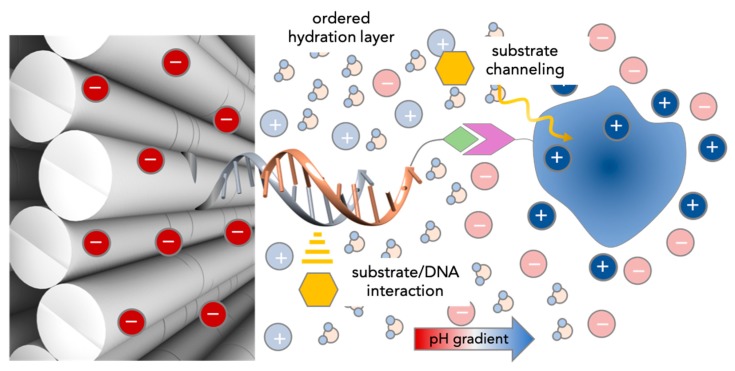Figure 6.
Current hypotheses on the observed increase of enzymatic activity for DNA-scaffolded enzymes. Unspecific substrate-DNA interactions can be responsible for a higher local concentration of the substrate (yellow symbol) in the vicinity of the active site. In case of enzyme cascades, the spatial proximity of the coupled enzymes facilitates the diffusion of intermediate species (substrate channeling). The highly dense and negatively charged DNA nanostructure surface and the (mostly positively) charged protein surface generate an ordered hydration layer that is supposed to favor the conformation of the protein and accelerate the reactions at its surface. Finally, the counterions at each surface are thought to establish a pH gradient, with a lower pH next to the DNA surface than in bulk solution. This is supposed to affect (mostly enhance) the catalytic activity of the enzyme.

